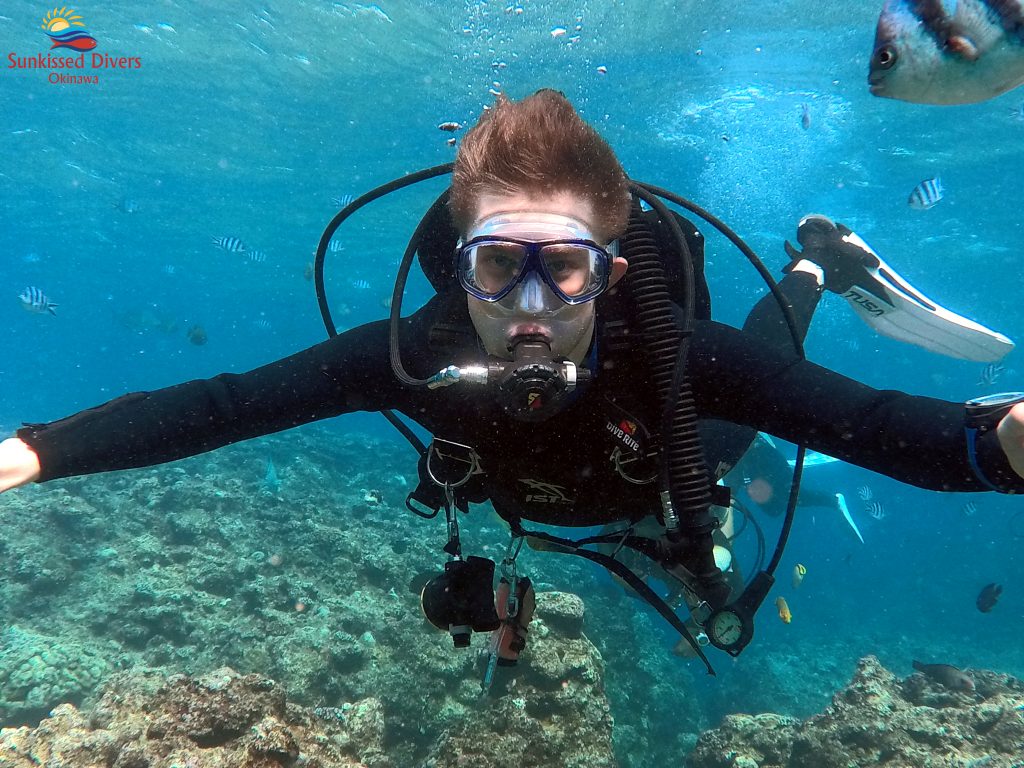
1. Deep Cleaning
Now, that most of us are enjoying the warmth of our homes due to the Covid 19 virus, finaly you will have time to catch up on the important things in your shed you were hiding in the darkness for the past couple of days: Your diving gear!
And in case you wonder, where should I start? I give you a small hint, it’s called cleaning.
That's right! The best thing you can do first, is a thorough clean up of your diving gear
Hopefuly every diver has learned during their Open Water Diver course, how to look after their gears after each and every dive, but I’m sure, that there are still a few out there who has no single clue about the right procedures. Whether it’s coming from the lack of knowledge due to a lazy Instructor who was working for a “kettle dive” operator and just couldn’t care less to teach properly, or the diver is a lazy person in general, not looking after your gear will eventualy come at a big price. Trust me, a free flowing regulator or a sticky inflator button at 100′ is not something you want to experience.
But I don't have the right tools!
Don’t be lazy and stop looking for excuses! You don’t need any special tools to tidy up all your scuba gear from the mask to the fins.
All you will need is water and a bath tub, or if your home only has a shower room, then you can even use the bin- after a proper cleaning- to soak your gear.
Let's start with the BCD
When cleaning your BCD ( Bouyancy Compensating Device) after the dive, normaly you soak it into the water and fill up the inside bladder with water as well, to melt away all the salt residue and after a while, you just drain it through the inflator and the dump valve and hang it up to dry.
But when was the last time you took the dump valve and the inflator off the bladder? Probably never.
Removing the inflator is a fairly easy process as they are held in place with a Zip-tie or some sort of ring mechanism with a screw.
Once the inflator is off, you can go ahead and remove the hose, together with the hose retainer or shoulder dump valve as well. If you have more than one dump valves, make sure to remove all of them.
For example on my BCs, I have another valve down at my left kidney and I can also remove the bladder form the outer shell.
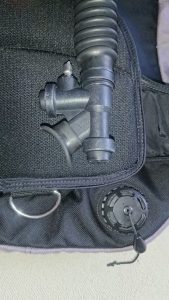
If you feel adventurous, you can also take the inflator apart. On a standard inflator, you will have to remove the inflator button first( watch the spring!), then with a special tool( or with a couple of screwdrivers, scissors, back of a knife) you can unscrew the metal plate. Be gentle, you don’t wan’t to break the housing.
Now you can open the other bolt from the bottom.
If you don’t have spare o-rings, just leave the old ones on and after the cleaning give them a little lubrication with Silicone Lube. Pay attention when cleaning around the o-rings not to cut them and avoid putting them into the cleaning machine or vinegar solution.
You can soak all other metal parts in viegar or put them into a Sonic cleaner if you have one, then gently clean all parts with very soft brass brush. Once everything is clean, shiny and lubricated, you can put everything back together, idealy test it, then move on to the dump valves.
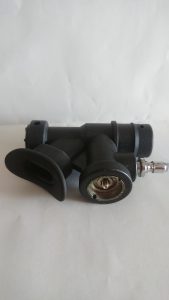
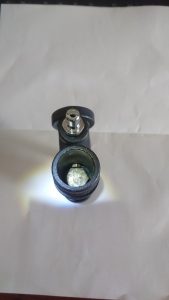
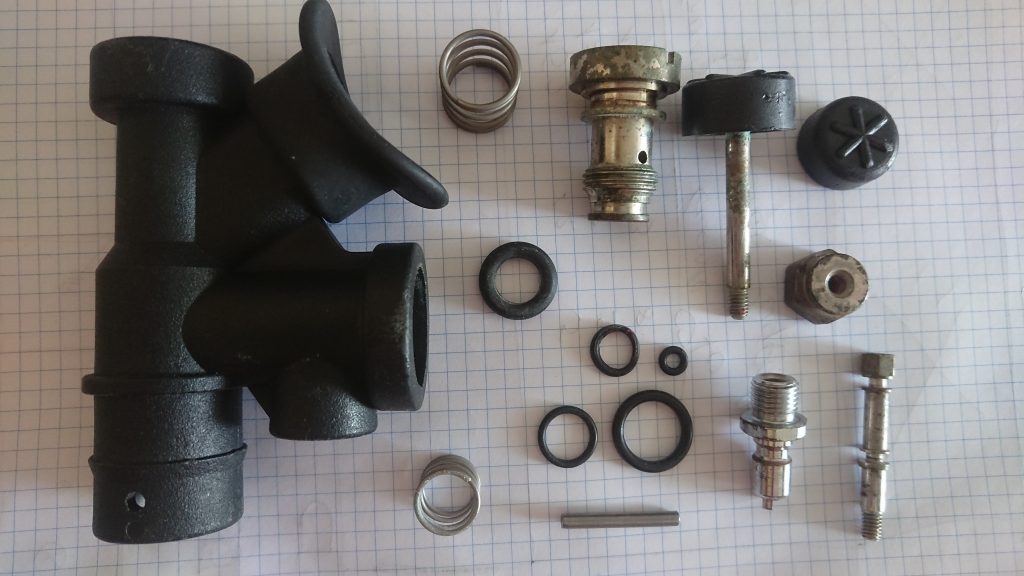
Cleaning the dump valve
To remove the dump valve, you just have to unscrew it from the bladder. Once off, check that the string is intact and replace if needed, clean the wole unit, whipe the threads on the bladder and put everything back together.
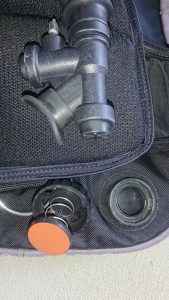
If you have a back plate/inflate bc, you can go even further by removing the entire webbing, D-rings, the inside bladder and pockets, to give every inch a proper cleaning and to check, if aything needs to be replaced.
Cleaning your regulator
Let’s be honest, everyone has their opinion on how to clean the scuba regulator and everyone knows better than the other guy. I have my way as well and no doubt that I heard it before, that the way I do is either wrong or awesome. So if you have a chance, check what is in the manual, as they know better than anyone probably.
Of course now we are not talking about the full maintenance of the kit, as you are not supposed to do that unless you have the right qualifications and experience. So unless you are a technician yoda of the scuba regulators and first stage, don’t start taking everything apart!
What you can do, is removing the mouth piece and cleaning the slime from under it. Yes, it will be there. The other thing I like to do is put my finger through the mouthpiece opening. Inside the regulator housing when it’s wet and if you were a lazy diver, you can feel a slippery layer if saliva. Yummi…
To get rid of that, just wipe it with a clean clothe and put some moutwash inside. Then shake it an let it set for a while. The mouthwash will gently disinfect your regulator without damaging it, while leaving a nice minty taste behind.
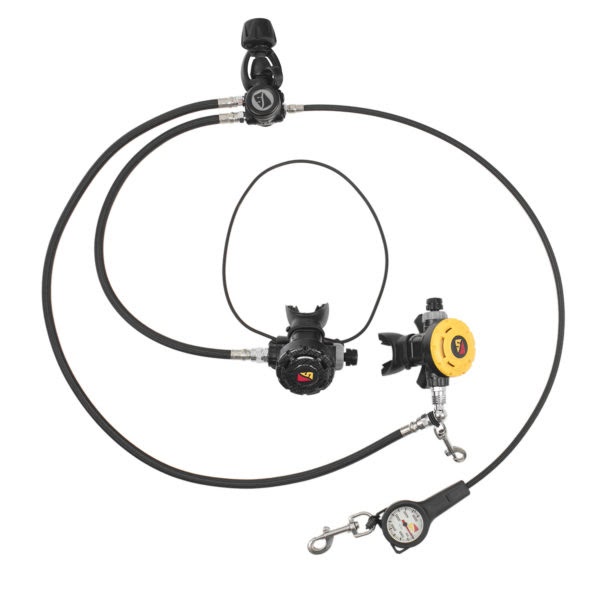
Removing the front cover on the regulator
The rule of thumb, is to never press the purge button when the regulator is submerged without pressure, to avoid flooding the entire system. But that means, that even if you let your scuba regulator soak in fresh water for hours, there will be some some parts, where the salt can build up. It’s not a big issue when diving every day, but since the quarantine has started due the Covid 19 virus, I guess your diving gear is just hanging on the hook and it will be there for a very long time, before it can go back to our beautiful blue oceans.
This extended amount of time will allow the salt to chrystalize again, for example on my regulator, the purge button got stucked. Not the lever inside the housing, but the actual plastic button. So I unscrewed the front grill, then soaked it fresh water alone while playing with the purge button to get rid of all the salt residue. When the cover is off, you might want to look at the threads and check for any damages as well. If you are careful enough, you can also remove the membrane and gently wipe the edges around it, in case there’s some small piece of sand or salt underneath.
Do not take your regulator further apart unless you’re qualified to do it!
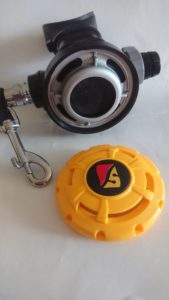
If your mask has a removable lens, take it apart completely, including the strap and give it a good cleansing.
You can also unroll your smb and give it a rinse, check and clean the dump valve( if it has any) and unroll all the line from the spool to do the same with it. The spring loaded bolt snap has a tendency to seize up and make it harder to operate due to salt build up. So give them a decent soak and move around the parts in fresh water. Once I saw someone is actualy spaying it with some WD-40, but that might not be the best idea as it is toxic for the ocean life.
2. Learn Something New
Learning something new has all sorts of health and menthal benefits. Yes, the world is falling apart, but sitting at home and going down the rabbit hole of the internet while staring at a screen with an empty eye is just a waste of time.
This is the perfect time to learn something new, to improve yourself! Many agencies from Padi to TDI are offering diving courses online. Yes, you won’t be able to dive, but you can finish all your theory part at the comfort of your couch instead of a classroom, so when things change, you can jump straight into the water to finish your course, whether you are interested about diving with Nitrox or becoming an Open Water Diver.
3. Search for your next holiday destination
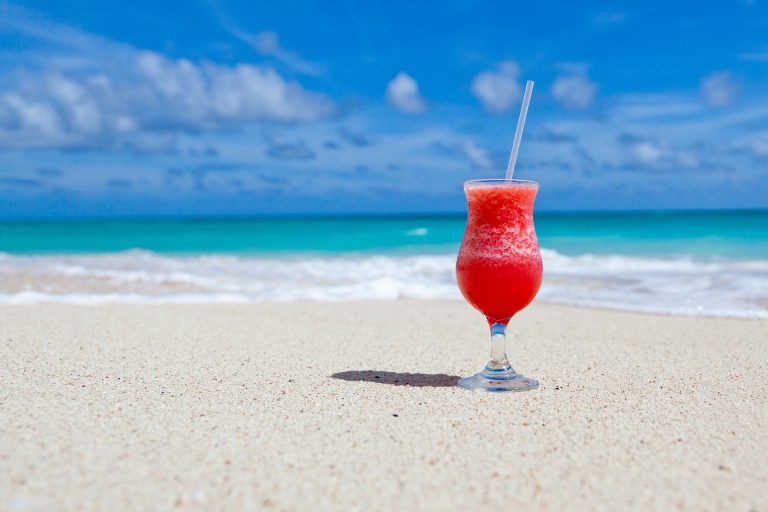
Hope is a beautiful thing. We hope for health, a better future, more time with our loved ones and we hope, that one day we can go for a scuba diving holiday again. There’s nothing wrong to wish for something better! So sit down and make a list:
- Where you’ve never been before?
- How you can have the best time of your life there?
- And how you can afford it?
Since the outbreak of the Covid 19 virus, businesses around the world are struggling to stay out of the red zone. Airline companies, hotels, diving shops are all closing down for god knows how long while people are restricted to stay at home. This also means, that these companies have to attract as many cutomers as they can and the best way to do that is to reduce their prices and offer some unbeliveable discounts. Time for a Bargain Hunt!
You have nothing but time, so start looking for the best deals around the world!
4. Buy New Gear From Local Dive Shops
If you’re lucky enough to have a safe amount of savings or a steady income from working from home, think about all the small diving shops, who are literally fighting to stay alive every day. Planning to buy a new underwater torch, regulator or camera? Find these shops and order from them online. The big companies will survive as they always did, but your friend who runs the shop from passion and love will might have to close down the business.
5. Learn Editing Pictures and Videos
A few years ago editing pictures and videos were an expensive hobby. You’ve had to have a very strong computer with a decent video card to even consider editing videos, not to mention the cost of these editing softwares.
Today you can start editing even with your smartphone. It might not be studio quality, but it will be much better than your green and blue reef shots before.
Adobe Lightroom, Dive+, Photoshop Express, Snapseed are all great editing softwares with free options and they are available for Android or iOS as well.
For video editing, if you don’t mind paying for a software, Premier Pro is simply the best, but If looking for an alternative(free) solution, then you should try LightWorks, OpenShot or DaVinci Resolve. They are all great programs and everyone can find the most suitable for their needs.









